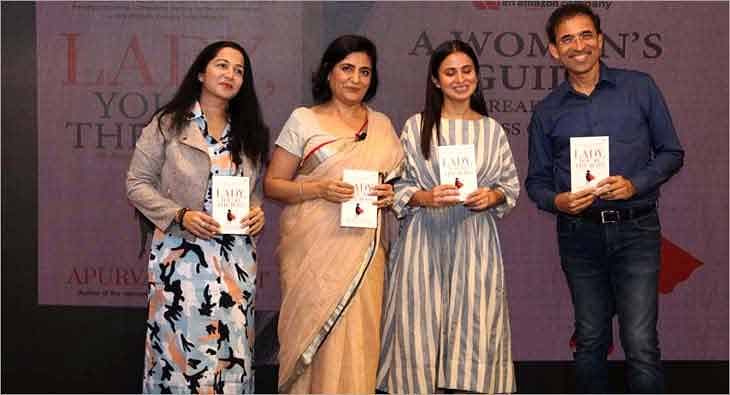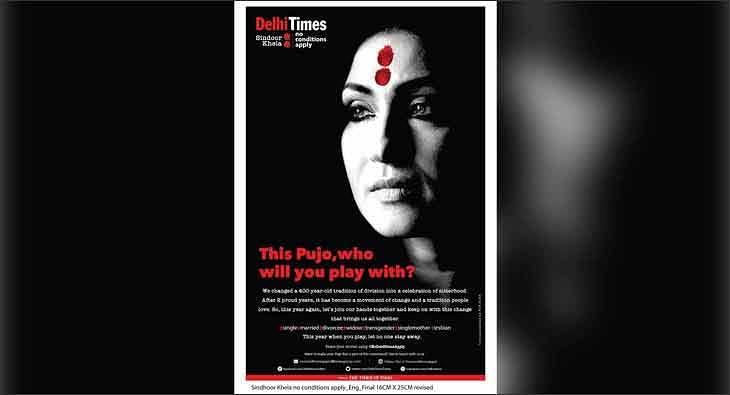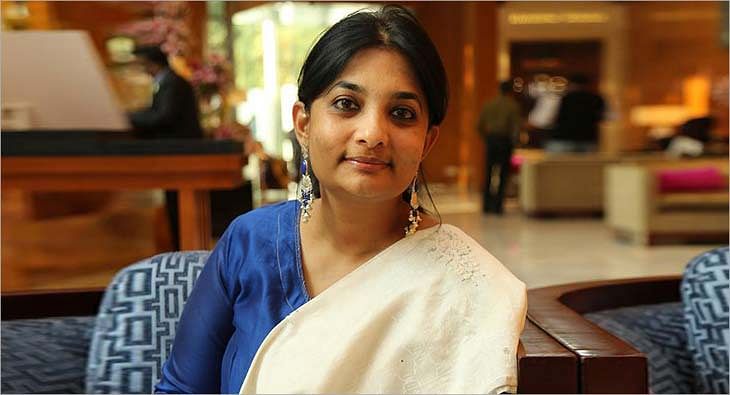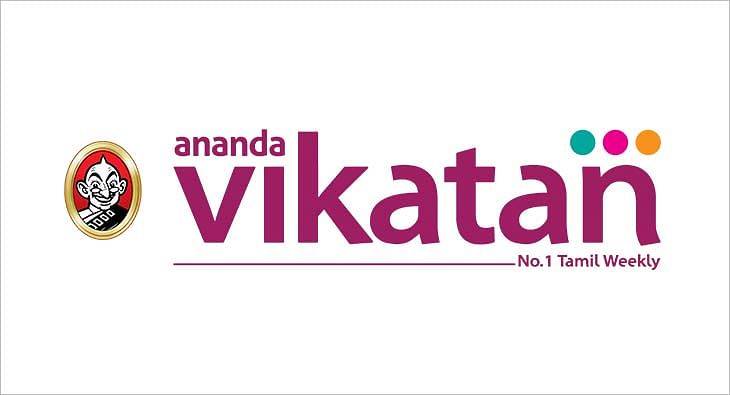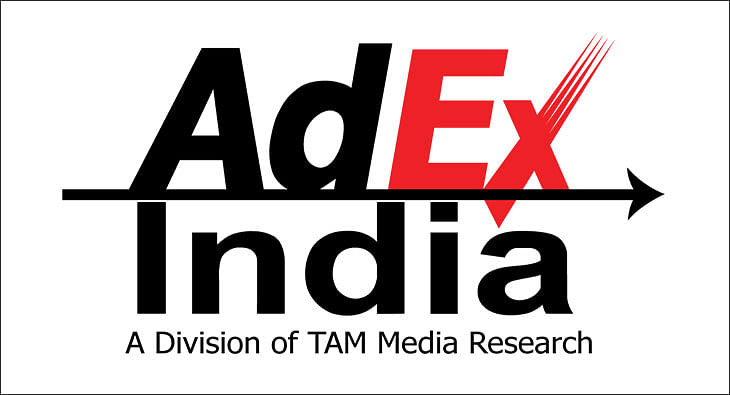United Nations violates press freedom: Drew Johnson
In November, India will play host to the seventh session of Conference of the Parties (COP7) as also the first session of the Meeting of the Parties (MOP1). American journalist Drew Johnson fears that the press may be subjected to similar restrictions at the event that the UN has put before him and other journalists in the past

“Take your job plan and shove it, Mr President. Your policies have harmed Chattanooga enough.” That was the headline of an opinion article written by American journalist Drew Johnson criticizing US President Barack Obama’s jobs plan in 2012. The only problem is that President Obama happened to be in the city that day. Eventually, Chattanooga Times Free Press, the conservative newspaper Johnson worked for, fired him.
The newspaper claimed that he violated editing principles while putting out that headline. But Johnson claimed otherwise. He stated that he had followed the standard editing procedure and the policy on the basis of which he was fired did not exist at the time he wrote the article.
Johnson, who’s been a columnist for The Washington Times, wasn’t at the receiving end for the first time. In February 2007, Johnson exposed former US Vice President Al Gore’s electricity consumption records. The investigation revealed that he used more electricity in a month than an average American household did in one full year. Numerically speaking, Gore’s bills were twenty times higher.
Unfortunately, for Gore, the expose was in the aftermath of his much acclaimed documentary called Inconvenient Truth. Johnson’s findings made Gore appear like a hypocrite who wasn’t personally cutting down on his electricity consumption but sermonising the entire world on adapting to a sustainable way of life to compliment the environment. At that time too, Johnson was faced with criticism.
Nevertheless, Johnson carried on with his journalism that eventually led him into a standoff with the United Nations. After irking the sitting US President and former Vice President, Johnson’s reportage and questioning led to the World Health Organisation (WHO) throwing him out of Conferences of the Parties held in Moscow in 2014. He has observed the United Nations frequently censor the press and harass journalists through various means.
In November, India will play host to the seventh session of Conference of the Parties (COP7) as also the first session of the Meeting of the Parties (MOP1). It’s something that has Johnson worried. “Besides kicking journalists out of meetings that should be open to the press, there is an indirect kind of press exclusion that takes place at the COP meetings to ensure that only a very small number of reporters will even be able to attend,” he told exchange4media.
He further said, “The COP is being held at the exact same time as the U.S. presidential election in November, so most international political reporters will be too busy reporting on the most important election in the world than to cover a WHO tobacco control meeting.” However, he was hopeful that Indian journalists will work towards ensuring accountability at the WHO meet in Noida.
“The world will listen to Indian journalists if they report that WHO officials and government leaders from across the globe are treating the media in ways that would never be tolerated by Indian leaders,” he added.
During his trip to India earlier this month, Johnson spoke exclusively to exchange4media. Edited excerpts:
In an opinion piece for The Washington Times, you have termed the United Nations a “hypocrite” and a “fraud” when it comes to press freedom. What prompted you to level such serious allegations against the world body?
The United Nations host the annual World Press Freedom Day to promote freedom of the press among UN member countries and to encourage governments to operate in a transparent and accountable manner. At the same time, however, the UN and especially, its public health arm, the World Health Organization, are taking drastic steps to silence the press.
For example, the media has been banned from two separate WHO tobacco control Conferences of the Parties (COPs) that I attended as a journalist. During the most recent one, two years ago in Moscow, I and other journalists were physically removed from the COP event so we could not see how delegates voted on a proposed international tobacco tax and other issues.
These meetings are supposed to be open to the media, and they should’ve been. After all, these delegates are high-ranking government officials – health and finance ministers from 180 countries – who are using their citizens’ tax dollars to come together and discuss issues that impact the health and financial well-being of most of the people on Earth. The media should have had the opportunity to report their discussions, record their votes and allow the public to hold them accountable for their decisions.
Additionally, the WHO blacklisted a reporter who wrote critically about the organization’s response to the Ebola crisis. She was banned from press conferences and blocked from receiving email updates from the WHO.
The organization also frequently awards prominent meetings to countries that have almost no press freedom at all. Turkmenistan, for instance, hosted two WHO meetings in the past year, even though the country was ranked third-worst in the world for respecting press freedom by Reporters Without Borders. The nation is known for imprisoning and even murdering journalists who attempt to objectively report on the government.
Since the UN hosts World Press Freedom Day while behaving as a threat to press freedom, I felt very justified in using terms like “hypocrite” and “fraud.” In fact, I’m not sure those terms are strong enough. The UN is behaving in a truly despicable manner.
Isn’t it ironic that a global organisation like United Nations is being accused of subjugating the press? In an ideal scenario, the UN should be at the forefront of guarding press freedom.
It’s absolutely outrageous that the organization that is most responsible for protecting global press freedom has become an enemy to the very principles it should be defending.
As an American or an Indian, it’s easy to take a cavalier attitude about the UN’s horrible actions when it comes to press freedom. Fortunately, our countries have strong laws regarding freedom of the press, open meetings, open records and government transparency.
But for smaller, less-developed or more corruption-prone countries, the UN sets the standard for how journalists should be treated and recommends policies to enhance press freedom. But these countries may very well lose their interest in protecting freedom of the press once they realize that the UN, their guiding light regarding how to operate a free and objective media, is banning the press and preventing journalists from receiving information. The UN is setting a truly dangerous example that will harm journalists, and ultimately, citizens in countries throughout the world.
Why is the United Nations behaving in such a reckless manner?
In my experience, when a government goes to extreme lengths to prevent the media from attending meetings or accessing information that should be a matter of public record, it’s because someone has something to hide. It may very well be that the UN and the WHO have something to hide, as well.
Are any media organisations or journalists actively taking up this issue?
The Committee to Protect Journalists and UN Watch have both expressed concern about the WHO’s troubling treatment of the media. A few members of the international press who were present when the media was banned from the COP in Moscow intend to attend this year’s version of the meeting in Greater Noida this November to report on press exclusion issues.
Frankly, however, the number of international reporters who attend this meeting and who aren’t simply WHO cronies that intent on making the organization look good is very small.
As a result, journalists in the host country are the most influential voices when it comes to holding the WHO accountable for mistreating the media. The world will listen to Indian journalists if they report that WHO officials and government leaders from across the globe are treating the media in ways that would never be tolerated by Indian leaders.
A few journalists from Western Europe and North America can only do so much to hold the WHO accountable. Dozens of Indian reporters can force huge changes in how the UN and the WHO treats the media.
In November 2016, India will play host to the seventh session of Conference of the Parties (COP7) as also the first session of the Meeting of the Parties (MOP1). Do you expect the media to be subjected to similar restrictions that you have faced at UN events in the past?
Some insiders and delegates expect WHO officials to create opportunities for the media to interact with COP leaders that haven’t existed in the past. That may provide the appearance of more accountability and engagement with the media. But in reality, I expect the media will be kicked out of the COP proceedings and banned from covering discussion and votes. So the shameful media exclusion and the shocking assault on press freedom will almost certainly continue.
Besides kicking journalists out of meetings that should be open to the press, there is an indirect kind of press exclusion that takes place at the COP meetings to ensure that only a very small number of reporters will even be able to attend. The COP is being held at the exact same time as the U.S. presidential election in November, so most international political reporters will be too busy reporting on the most important election in the world than to cover a WHO tobacco control meeting. Additionally, the COPs are almost always held in locations that are extremely expensive and difficult for Western European and North American journalists to attend, meaning that many of the world’s most influential media outlets simply don’t report on the meetings.
While India is certainly easier to get to for most journalists than South Africa or Uruguay and simpler to get into than Moscow, it is still a place most media outlets won’t pay to send reporters. As a result, it is imperative that Indian journalists cover the meeting and report on the policy decisions that take place, as well as shine a light when press freedom is attacked.
Read more news about (internet advertising India, internet advertising, advertising India, digital advertising India, media advertising India)
For more updates, be socially connected with us onInstagram, LinkedIn, Twitter, Facebook Youtube & Whatsapp
DNA to shut down Mumbai and Ahmedabad print editions
The publication said it will now be 'focussing on its online brand which has grown manifold in the digital space'
Daily News and Analysis (DNA) on Wednesday announced that it will be shutting down its print editions in Mumbai and Ahmedabad. In February this year, the Zee Media Group-owned English daily shut down the Delhi edition. The Pune and Bengaluru editions were shut in 2014.
Announcing the decision in an ad in the newspaper, it was said DNA will be focussing on its online brand which has grown “manifolds in the digital space”.
It said that its “readers especially the younger audience preferred reading on their mobile phones. “We thank each one of you for the print readership over the past 14 years. The print publication for Mumbai and Ahmedabad will be ceased effective 10th October 2019, Thursday till further notice,” read the announcement.

Talking about the development, a former editor of the newspaper shared, “They conducted a town hall meeting to update their existing employees about the news of shutdown.”
Read more news about (internet advertising India, internet advertising, advertising India, digital advertising India, media advertising India)
For more updates, be socially connected with us onInstagram, LinkedIn, Twitter, Facebook Youtube & Whatsapp
I hope my book helps women maximise their potential: Apurva Purohit
Purohit, President, Jagran Prakashan, launched her new book 'Lady You’re the Boss' at an exclusive gathering attended by Madhukar Kamath, Shashi Sinha and Saugata Gupta, among others
Apurva Purohit, President, Jagran Prakashan, launched her new book 'Lady You’re the Boss' at an exclusive gathering of industry bigwigs and friends at the Arth Lounge in Khar, Mumbai on September 26. The book follows Purohit's very successful first book, 'Lady, You’re not a Man – The Adventures of a Woman at Work', which is in its 21st edition now.
Published by Westland Publications, an Amazon company, 'Lady You're the Boss' draws from Purohit’s personal experiences and lays down a plan of action for women to persevere and reclaim their true potential, without minimizing themselves in any way.
It addresses the process of working women transitioning from mid-management to senior leadership roles and aims to empower women across sectors and organizations, encouraging them to work their way to the corner office, consciously defeating those internal and external biases that stop many a working woman from chasing her dreams.
Actor Divya Dutta, cricket commentator Harsha Bhogle and Purohit herself read out chapters from the book at the event while Karthika VK of Westland Publications spoke of the experience of publishing the book.
Talking about the book, Saugata Gupta, MD and CEO, Marico, who was present at the launch, said, “We are very lucky that there are many women in the Indian corporate world who can break the glass ceiling. This book will be an interesting read. I have a daughter who’s very achievement-oriented too and I always encourage diversity in the workplace."
“I’m really looking forward to reading this book, going by the excerpts Apurva and the rest have read out today. Most importantly, it’s not pretentious, but sounds like something that would inspire everyone," said Abhijit Avasthi, Co-founder, Sideways.
Thanking the audience present at the launch, Purohit said, “I really appreciate that all my friends, colleagues and family are present here. Thanks also to my wonderful team. I’m hoping that this book will help all kinds of women realise their worth. When young girls grow up, they don’t know how to stand up because they sometimes feel incompetent. I’m hoping that 'Lady You’re the Boss' will help women maximise their potential and live up to all the dreams they’ve had.”
Madhukar Kamath, Emeritus, DDB Mudra, Shalini Kamath of SK & Associates, Vivek Sharma and Bharat Puri of Pidilite Industries, Shashi Sinha of IPG Mediabrands India, Ramesh Narayan of IAA, Pawan Bansal of Jagran Engage, Kartik Kalla of Radio City, Joe Thaliath of FCB Interface, Anil Viswanathan of Mondelez Foods India and Sanjay Purohit, Group CEO, Sapphire Foods (who is married to Apurva Purohit) were among those present at the event.
Read more news about (internet advertising India, internet advertising, advertising India, digital advertising India, media advertising India)
For more updates, be socially connected with us onInstagram, LinkedIn, Twitter, Facebook Youtube & Whatsapp
TOI announces 3rd edition of #NoConditionsApply – Sindoor Khela campaign
Conceptualized to promote gender equality, the campaign calls for inclusion of women in celebrations and combats discrimination they face in terms of caste, marital status and sexual orientation
Two years ago, an initiative by The Times of India reinterpreted a 400-year-old tradition with the award-winning campaign #NoConditionsApply – Sindoor Khela. Conceptualized to promote gender equality, the campaign calls attention to the issue of inclusion of women in celebrations and combats the discrimination that they face in terms of their caste, creed, marital status, sexual orientation etc. The campaign won accolades in India and abroad.
In its 3rd year, #NoConditionsApply – Sindoor Khela initiative aims to reach the corners of the nation and beyond spreading this message of inclusive celebration that celebrates womanhood sans any discrimination based on ‘labels’ and societal barriers.
The campaign that was conceptualized in 2017 and was organized for one pandal in Kolkata. The Times of India along with the puja committee of Tridhara Sammilani, which is also one of the oldest and most prestigious puja pandals in Kolkata, organized the first ever inclusive Sindoor Khela – which invited widows and transgenders to be a part of this grand celebration.
What started with a single pandal celebration, went on to become a national movement with participation from over 100 pandals in 2018. The campaign hopes the movement will achieve the status of a global phenomenon this year. Owing to the widespread popularity of the campaign in its previous two editions, TOI has been getting several requests of extending the campaign to newer cities.
This year, the campaign spreads its wings across the country and beyond, and #NoConditionsApply encourages readers to host an inclusive Sindoor Khela and celebrate along with all sisters irrespective of the labels society may have attached to them.
The campaign urges patrons to bring a sister along to the celebration – sister being used metaphorically for any women they know of in their family, friend and neighbourhood, who have been shunned to be a part of the celebration.
The campaign asks the patron to invite their lesbian sister, transgender sister, widowed sister, divorcee sister, single mother sister to the celebrations this year. Since its inception, the campaign has witnessed phenomenal support worldwide from people who wanted to offer their support and be a part of the movement.
Garnering support from Kolkata’s agents of change - Rituparna Sengupta, Gargee Roychowdhury, Manobi Bandyopadhyay and Sohini Sengupta the campaign extends an invitation to women to #BringaSisterAlong this Pujo. With the phenomenal success of its previous editions, garnering 718 mn reach over the past 2 years, the latest edition aims to extend inclusion not just in Sindoor Khela but across all celebrations as part of the fabric of our tradition.
Commenting on the launch, Sanjeev Bhargava, Director, Brand TOI, said, “The #NoConditionsApply – Sindoor Khela campaign is extremely special to all of us, owing to the change that it has fostered across the various communities in India. While it is contextualized to a Bengali cultural event, the message of inclusive celebration and sisterhood resonates with everyone. We have always left no stone unturned in spreading the message across the various strata of society. Our success lies not in the awards that this campaign has garnered but in the fact that the initiative has grown from strength to strength and is rapidly becoming a symbol of inclusiveness. We are grateful for the overwhelming response we have received from women across the country who have shared their celebrations with us. The fact that it is back for the third time is testament to the widespread movement that the campaign is now. I thank everyone who has supported us in making the change happen.”
Speaking about the campaign, Swati Bhattacharya, Chief Creative Officer, FCB Ulka said, “This piece of work has been a big emotional milestone for me personally. This bloodless coup of a campaign shows the world that joy love friendship and beauty can help break down walls an inclusive Sindoor Khela shows us that sisterhood is one of biggest ideas that can change the world we live in.”
Read more news about (internet advertising India, internet advertising, advertising India, digital advertising India, media advertising India)
For more updates, be socially connected with us onInstagram, LinkedIn, Twitter, Facebook Youtube & Whatsapp
We’re aggressively driving partnerships across the ecosystem: Archana Anand, ZEE5 Global
Anand, Chief Business Officer, ZEE5 Global, tells us about the platform's partnership with Google and the markets the brand is most upbeat about
From being one of the most downloaded OTT apps in places like Bangladesh and Sri Lanka to curating content especially for the global audience, ZEE5 is upbeat about their global roadmap. Archana Anand, Chief Business Officer at ZEE5 Global talks about the markets the brand is most upbeat about. ZEE5 also brought Google on board to help them achieve maximum reach globally. Google did a thorough market analysis of the audiences interested in the content that was owned and created by ZEE.
ZEE5 seems to have ranked as the No 1 entertainment app in key markets within weeks of its launch. Can you please elaborate on the markets?
Bangladesh and Sri Lanka were among the key SAARC markets where we galloped to the No 1 position, that too within a few weeks of launch. We launched ZEE5 across 190+ markets in Oct 2018 and rolled out our marketing campaign a few weeks later in Jan 2019 across select markets in APAC. Our immediate priority was to establish ourselves firmly as the largest and most comprehensive destination for Indian entertainment, especially in SAARC countries where our content has the highest direct affinity. We used inputs from local market specialists and extensive market insights to create very specifically targeted media campaigns basis for various benchmarks to achieve quick market penetration with rapid awareness and usage. All this and more resulted in ZEE5 becoming the No. 1 entertainment app across key markets in SAARC including Bangladesh and Sri Lanka within just a few weeks of launch, and now we look to replicate this success story across other markets soon too.
You are also one of the first OTT platforms from India to customize Indian content for global audiences? Tell us about the markets you are upbeat about? What is the kind of content you are curating for the global audience?
As we deepened our presence across international markets, we realized that the huge love for Bollywood and Indian TV Shows is not restricted to Indians or even South Asians abroad, but is also huge among mainstream audiences. This was also supported by the insights from our local linear channel teams. Therefore, in April 2019, we launched a range of Indian content including Bollywood movies dubbed across 5 international languages, Bahasa Malay, Thai, Indo Bahasa, German and Russian, expanding our target audience beyond South Asians to mainstream audiences too across these markets, and while its early days, we are seeing a great response.
Any particular reason why Middle East is a strong market and you have done so many associations there?
The Middle East is a very exciting market for us as there is a huge Indian and South Asian community there which is already familiar with and loves our content across languages like Hindi, Malayalam, Tamil, Bengali, and others. We have a strong bouquet of content that’s striking a chord among the South Indian community in the market. There’s also a huge demand for Bollywood movies in the Middle East among local audiences too and our catalogue of 2000+ movies as well as our Originals, many of which have Bollywood stars, caters superbly to that demand. Our recent launches like Uri, Simmba, and Kedarnath among others have done really well as have our Originals like Kaafir, The Final Call, and Poison etc, n fact the Middle East was the first of the three markets that we kicked off our new campaign ‘Full On Entertainment’ in, through various on-ground events. Our recent partnerships with Eurostar and the LuLu Group are only the first of many and we have some very key telco partnerships also in the pipeline.
You have also roped in Google as a consulting partner to build their global strategy and execution plan. Tell us more about the partnership. What exactly would be Google’s role?
Launching globally across 190 countries required an in-depth understanding of the digital audiences across the markets, especially the far-flung ones. Prioritizing our key markets to ensure that we drive clear wins out of them was going to be an important task at hand for us and Google was the obvious choice for us to partner with for our global rollout. As a consulting partner, Google did a thorough market analysis of the audiences interested in the content that was owned and created by ZEE and that threw up some very key insights. Those, along with inputs from local market specialists and our own business teams were used to create media plans and strategies basis the benchmarks.
Every OTT platform now also has telecom partners, while we know you have partnerships with Airtel in India do you have any such tie-ups with international players too since you are aggressively promoting your platform globally?
Absolutely - we’re very aggressively driving partnerships across the ecosystem. Since our launch in October 2018, we have built out a slew of strategic partnerships in every key market like Dialog in Sri Lanka, Celcom in Malaysia, Robi Axiata in Bangladesh and others. We’ve also partnered with Apigate for multiple markets, and with Zeasn and Netrange for their Smart TV range. We’re also building out a strong offline presence in key markets like the Middle East with our partnerships with key retailers like the LuLu Group and Eurostar. We have multiple partnership announcements also coming up over the next several weeks including our first in Australia.
Read more news about (internet advertising India, internet advertising, advertising India, digital advertising India, media advertising India)
For more updates, be socially connected with us onInstagram, LinkedIn, Twitter, Facebook Youtube & Whatsapp
Vikatan Group revamps print portfolio
As part of its restructuring exercise, the print bouquet has been realigned as core magazines and special interest magazines
As part of its restructuring exercise, the Vikatan group has revamped its print portfolio with a sharper focus towards its content reorientation. The print bouquet has been realigned as core magazines and special interest magazines.
The core magazine bouquet consists of the 93-year-old ‘Ananda Vikatan’, weekly magazine in Tamil, which has a Total Readership (TR) of 33.94 Lakhs (IRS 2019, Q2); ‘Aval Vikatan’, fortnightly women’s Tamil magazine, with readership (TR) of 13.26 Lakh (IRS 2019, Q2); and ‘Junior Vikatan’, bi-weekly, Tamil Socio-political magazine.
The special interest magazine bouquet includes, ‘Nanayam Vikatan’, (TR of 3.46 Lakh / IRS 2019Q2), a personal finance & entrepreneurship magazine; ‘Pasumai Vikatan’, (TR of 8.55 Lakh / IRS 2019Q2), a magazine devoted & focussed to the organic farming and inclusive farm practices; ‘Motor Vikatan’, (TR 3.72 Lakh / IRS 2019Q2), auto magazine in Tamil; ‘Sakthi Vikatan’, (TR of 4.88 Lakh / IRS 2019, Q2), the spiritual magazine about the religious culture and heritage of the land, and ‘Aval kitchen’, the brand extension of ‘Aval Vikatan’ Magazine focusing on food, recipe and kitchen.
In the process, two of its print titles, ‘Vikatan Thadam’ & ‘Doctor’ Vikatan has been shelved from September 2019, while ‘Aval Manamagal’, the quarterly bridal magazine has been converted as an advertiser driven publication in the B2B route and ‘Chutti Vikatan’, the children’s magazine will take a completely new format to directly engage with schools and children.
Their content on literature, health & wellness, bridal fashion & shopping, and children-focussed content will be seamlessly integrated in print & digital platforms.
“After immense deliberations on content and market acceptability, we have restructured our print portfolio and two titles have been shelved and amongst two others, ‘Aval Manamagal’ has been migrated to AFP model, while ‘Chutti Vikatan’ has been contextualized to the children & school ecosystem” said, B Srinivasan, Managing Director, Vikatan Group, “The content will be seamlessly integrated with the rest of the magazines. Vikatan management remains fully committed to all other group magazines.”

Read more news about (internet advertising India, internet advertising, advertising India, digital advertising India, media advertising India)
For more updates, be socially connected with us onInstagram, LinkedIn, Twitter, Facebook Youtube & Whatsapp
Print sees 8% rise in ad volume in Q2 2019 compared to Q1 2019: TAM Adex
There has been a 15% rise in ad volume from the Education sector in Q2 2019
While there has been an 8% indexed growth from Q1 to Q 2 2019 in the Print medium, it’s the Education sector that has increased its share dramatically as per TAM Adex data. From 11% in the first quarter, the sector has managed to increase its share of ad volumes to 26% in the second quarter. However, Auto declined to 13% from 17% while Services went down from 18% to 14%.
If we compare the first half of 2018 to the first half of 2019, Education has managed to take the top spot in both the years. Although the shares went down by 1% from 2018 to 2019, it is still the top sector. Auto gained 1% more share bringing it to 16% from 15% in 2018. Ad volumes have dropped considerably from H1 2018 to H1 2019 by 6%. All other sectors have gone down by 1%.
Allen Career Institute and Aakash Medical College Maruti Car range, Hero Two-wheelers, Indira Infertility & Test Tube Baby Centre and Homecare International are the major brands in the first half of this year. However, the overall indexed growth of ad volumes has fallen by 7% in the first half of 2019 compared to H1 2018.
Read more news about (internet advertising India, internet advertising, advertising India, digital advertising India, media advertising India)
For more updates, be socially connected with us onInstagram, LinkedIn, Twitter, Facebook Youtube & Whatsapp
Delhi High Court restrains publication of defamatory content against EbixCash by Viceroy
The Court issued a dynamic injunction restraining publication or republication of certain defamatory articles against EbixCash by US-based Viceroy Research Group
The Delhi High Court has issued a dynamic injunction order restraining publication or republication of the contents of certain defamatory articles against EbixCash and Ebix (Nasdaq:Ebix), by US- based Viceroy Research Group, Fraser Perring and other principals of Viceroy.
The court also directed the Times Group's ET Prime, to take down an article published July 31, 2019, since the article was largely based on statements made by Viceroy. The order also directed all the defendants including Viceroy, Fraser and all its principals not to publish any such content themselves or through their affiliates or agents or any other person acting on their behalf.
The issuance of a dynamic injunction by the Delhi High court is to be specially noted as a it implies that the next time any media or publication quotes Viceroy or Fraser or any of the contents of the banned piece by Delhi High court - “Goodwill hunting”; EbixCash will not need to approach the judge but just to reach out to the Registrar of court for taking down any such new article.
Delhi High Court had earlier issued an order on 8th May 2019, directing Twitter and Google to take down certain articles published by Viceroy Research Group.
In May 2019, EbixCash had approached the High Court with a plea that Viceroy Research Group had published certain articles on its website which contained defamatory information about the former. EbixCash had alleged that Viceroy Research, which holds “short selling” positions in the company and its sister concerns, was using these defamatory articles to drive down the price of the company, and thereby making profit from it.
Read more news about (internet advertising India, internet advertising, advertising India, digital advertising India, media advertising India)
For more updates, be socially connected with us onInstagram, LinkedIn, Twitter, Facebook Youtube & Whatsapp














 Share
Share